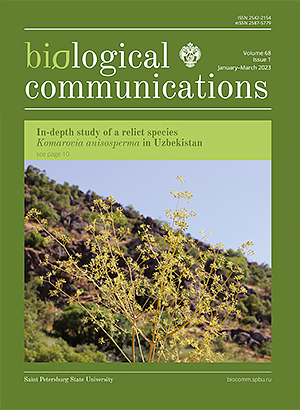Encapsulation of rat brain slices in agar gel solution for long-term and reversible cryopreservation
DOI:
https://doi.org/10.21638/spbu03.2023.103Abstract
Earlier there was found activity of glutamatergic ionotropic α-amino-3-hydroxy-5-methylisoxazole-4-propionic acid (AMPAR) and N-methyl-D-aspartate receptors (NMDAR) disturbed after prolonged cryopreservation of brain slices at temperature of -10 оС. To eliminate cryodamage of AMPAR and NMDAR, the slices were encapsulated in the special freezing solution (SFS). SFS consisted of agar at various concentrations (33, 44 and 50 %) and artificial cerebrospinal fluid (67, 56 and 50 %, respectively). This solution was used for long-term cryopreservation of slices (52 days, -10 оС). Alterations in amplitudes of AMPA and NMDA potentials in the slices after rewarming were studied. Recovery of AMPAR and NMDAR after cryopreservation of the slices in SFS was the most optimal when the agar concentration in SFS was 50 %. Cryopreservation of the slices in SFS with different agar concentrations predominantly promoted the development of long-term potentiation in 78 % of the tested slices. Thus, the encapsulation of brain slices in SFS contributes to the preservation of AMPAR and NMDAR activity during long-term and reversible cryopreservation.
Keywords:
brain slices, cryopreservation, freezing/rewarming, agar
Downloads
References
Downloads
Published
How to Cite
License
Articles of Biological Communications are open access distributed under the terms of the License Agreement with Saint Petersburg State University, which permits to the authors unrestricted distribution and self-archiving free of charge.





